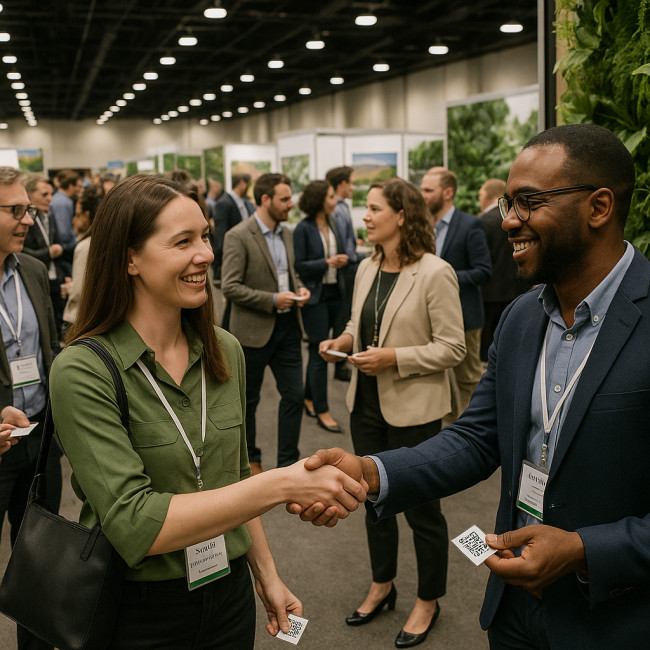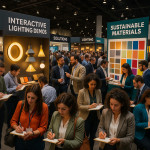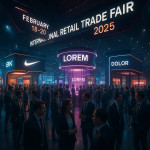Landscape designer events: onsite networking hacks every studio owner should know
Attending conferences and trade shows is expensive, yet studio calendars still fill up with landscape designer events every quarter. Why? Because nothing accelerates deal-flow like face-to-face connections. This guide packs field-tested, onsite networking hacks that turn casual chats into signed briefs, boost visibility in talent directories and expand your collaborator circle.
Why onsite networking still matters in a hyper-digital era

Algorithms help recruiters shortlist talent, but emotional trust still closes six-figure outdoor projects. Human cues—handshakes, tone, shared laughter—compress month-long email threads into a five-minute coffee break. Recent benchmarking by event-tech firm Bizzabo shows 88 % of senior decision-makers sign contracts faster after meeting suppliers in person. Use that trust gap to your advantage while competitors stay glued to their inbox.
Pre-event groundwork: build momentum before you badge in
1. Map high-value targets with smart filters
Scrape the public attendee list and cross-check names in online directory tags that win briefs. Spot overlaps between their project focus and your studio USP—urban biodiversity metrics, rain-garden expertise or heritage restoration.
2. Craft a one-sentence micro-pitch
Your goal is to trigger curiosity, not recite your portfolio. Try this structure:
- Problem : “City parks lose pollinator habitats.”
- Solution : “We design insect-friendly planting schemes proven to lift biodiversity by 37 %.”
- Proof : “See our drone-mapped case study featured in Landscape Journal.”
3. Prime social channels
Post that you're attending and tag the official hashtag plus niche keywords like “#sustainablehardscape”. Visitors scrolling the event feed will recognise you onsite, lowering the barrier for spontaneous chats.
At the venue: hacks to maximise every minute
Wear your badge like a billboard
Hang the lanyard high on the chest, not waist-level. Attendees glance at eye-line upwards; a visible studio name triggers more walk-ups.
Arrive 30 minutes before sessions
The registration queue is a goldmine of idle professionals. Strike up light talk while everyone waits—no competing audio, no booth distractions.
Choose “edge” seating
In keynote halls, sit at an aisle near the exit. You'll be first to greet speakers or VIPs as they leave the stage, snagging valuable seconds before the swarm arrives.
Conversation starters beyond “What do you do?”
- “Which project on your roadmap needs the most outdoor tech right now?”
- “Have you tried GIS overlays for climate-risk modelling yet? We're piloting it—happy to compare notes.”
- “I loved your question about carbon credits; here's how we tackle it in our planting specs.”
Leverage the spatial design of the event floor
Landscape designers understand circulation; apply that lens to networking.
- Booth bottlenecks: Main aisles clog after keynotes. Position yourself diagonally opposite a coffee bar—traffic slows, giving you longer chat windows.
- Break-out gardens: Many shows stage demo gardens. Offer impromptu critiques to onlookers; instant thought leadership draws influencers over.
- Quiet corners: Mark two low-footfall zones on the map for quick debriefs or confidential talks with prospects.
“Your ability to read space is your superpower—apply it to people flow, not only plant masses.”
Tech tools that give you an unfair advantage
| Tool | What it solves | Onsite tactic |
|---|---|---|
| QR business card apps | Zero paper waste, instant CRM capture | Display QR on phone lock-screen during chats |
| Voice-to-text notes | Remember nuanced client pain points | Dictate a 30-second recap immediately after each meeting |
| Hyper-local weather widgets | Ice-breaker + show expertise | Predict rainfall over demo garden; impress city planners |
Post-event follow-up: the 48-hour feedback loop
Deals die in the inbox if you wait. Follow this lightning sequence:
- Same day : Send a LinkedIn thank-you with a personalised nugget (“Here's the drone-mapping article I mentioned”).
- Day + 1 : Email a value asset—eg. a mini-audit on their current plaza plan.
- Day + 2 : Book a 15-minute call to scope next steps, referencing your GIS and drone mapping workflow.
Common pitfalls and how to dodge them
- Pitching too early : Listen 70 %, talk 30 % until you uncover a pain point.
- Collecting, not connecting : 200 cards mean nothing if none convert. Prioritise five high-potential leads.
- Ignoring allied disciplines : Urban planners, lighting designers, even floral artists can funnel you into new tenders. Learn synergy rules in cross-discipline partnership guides.
Networking hacks checklist
- ✅ Badge visible at eye level
- ✅ Micro-pitch rehearsed
- ✅ Two quiet zones mapped
- ✅ 5 top leads tagged in CRM by lunch
- ✅ Follow-up emails drafted before flight home
Quick self-test: Are you networking-ready?
Unlock event ROI with strategic alliances
Use your new contacts to pitch bundled maintenance packages, a tactic explored in seasonal maintenance revenue guides. Pair sustainable sourcing proof points from eco-material sourcing roadmaps to cement credibility.
Finally, list your upcoming appearances on the Artfolio spatial-designer event board so recruiters can plan face-to-face meetings well in advance.
FAQ
- How many events should a landscape studio attend per year?
- Three well-chosen conferences often yield more leads than a dozen random expos. Prioritise shows where municipal buyers and allied consultants gather.
- What if I'm introverted?
- Use micro-pitches and prepared openers to reduce social friction. Setting concrete meeting slots beforehand also limits draining small talk.
- Is a booth necessary?
- Not always. Walking the floor with intent can outperform a static booth, especially if your budget is tight.
- How do I track ROI?
- Log every contact in your CRM, tag by event, and review closed deals quarterly. Aim for at least 5× return on travel and ticket costs.
- Should I carry physical portfolios?
- A slim tablet with high-res project photos suffices. Save print lookbooks for VIP sit-downs scheduled in advance.
Conclusion: turn encounters into enduring partnerships
Events aren't just dates on a calendar—they're accelerators for studio growth. With sharp preparation, spatial savvy and disciplined follow-up, you'll transform fleeting hallway chats into long-term collaborations that enrich cityscapes and your bottom line.











